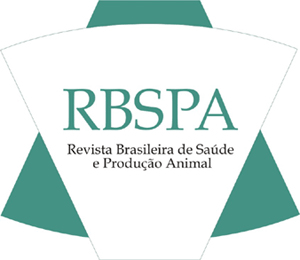SUMMARY
The experiment was developed to evaluate the effects of wilting and inclusion of cassava meal level on nutritive value, fermentative characteristics and losses of elephant grass silage. The 4 x 2 factorial scheme was adopted, with four repetitions, in a completely randomized design. The factors evaluated were wilting (without and with) and cassava meal level (0; 7.5; 15 and 22.5% of natural matter, DN). PVC silos with 50 cm height and 10 cm diameter were used for silages production, which were opened after 60 days. The wilting and cassava meal addition had increasing linear effect on DM content. Silages with cassava meal showed reduction of total nitrogen, ether extract, acid detergent insoluble nitrogen, neutral detergent fiber ash and protein free, acid detergent fiber, celluloses, hemicelluloses and lignin contents and increase of organic matter content, DM in vitro digestibility and total digestible nutrients. Relative to variables inherent to silages’ fermentative characteristics, pH presented quadratic behavior. Concerning to ammonia nitrogen, it was observed quadratic and decreasing linear behavior for silages without and with wilting, respectively. Wilting and cassava meal inclusion provided smaller effluent losses.
by-product; bromatologic composition; effluent; digestibility; Pennisetum purpureum
